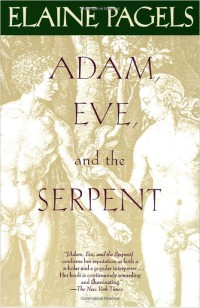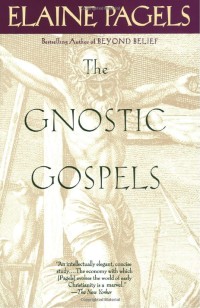Adam, Eve, and the Serpent

 By Elaine Pagels
By Elaine Pagels
Published by Vintage Books ed edition (September 19, 1989) Click to Buy this Book!
In The Gnostic Gospels, Elaine Pagels described the finding of the Gnostic Gospels in a cave in Upper Egypt in December, 1945, and how these documents shed an entirely new light on early Christianity. She also told how the Gnostics, though far from united in their beliefs, practiced and preached a far more esoteric Christianity than that of the Church; and how the Church suppressed and destroyed the Gnostic writings. The documents found in Egypt had obviously been hidden there to preserve them from destruction.
In her later book (1989), reviewed here, Pagels takes up the story again, this time investigating how the traditional patterns of gender and sexual relationship arose in our society. In the process she saw that the sexual attitudes we associate with Christian tradition evolved during the first four centuries of the Common Era, when the Christian movement, which had begun as a defiant sect, transformed itself into the religion of the Roman Empire. Many Christians of the first four centuries took pride in their sexual restraint, eschewed polygamy and divorce, which Jewish tradition allowed — and they repudiated extramarital sexual practices commonly accepted by their pagan contemporaries, practices that included prostitution, abuse of slaves and homosexuality. Such views, although not completely original, soon became inseparable from Christian faith. Some even went so as to embrace celibacy, which they urged upon those capable of the “angelic life.” More »
